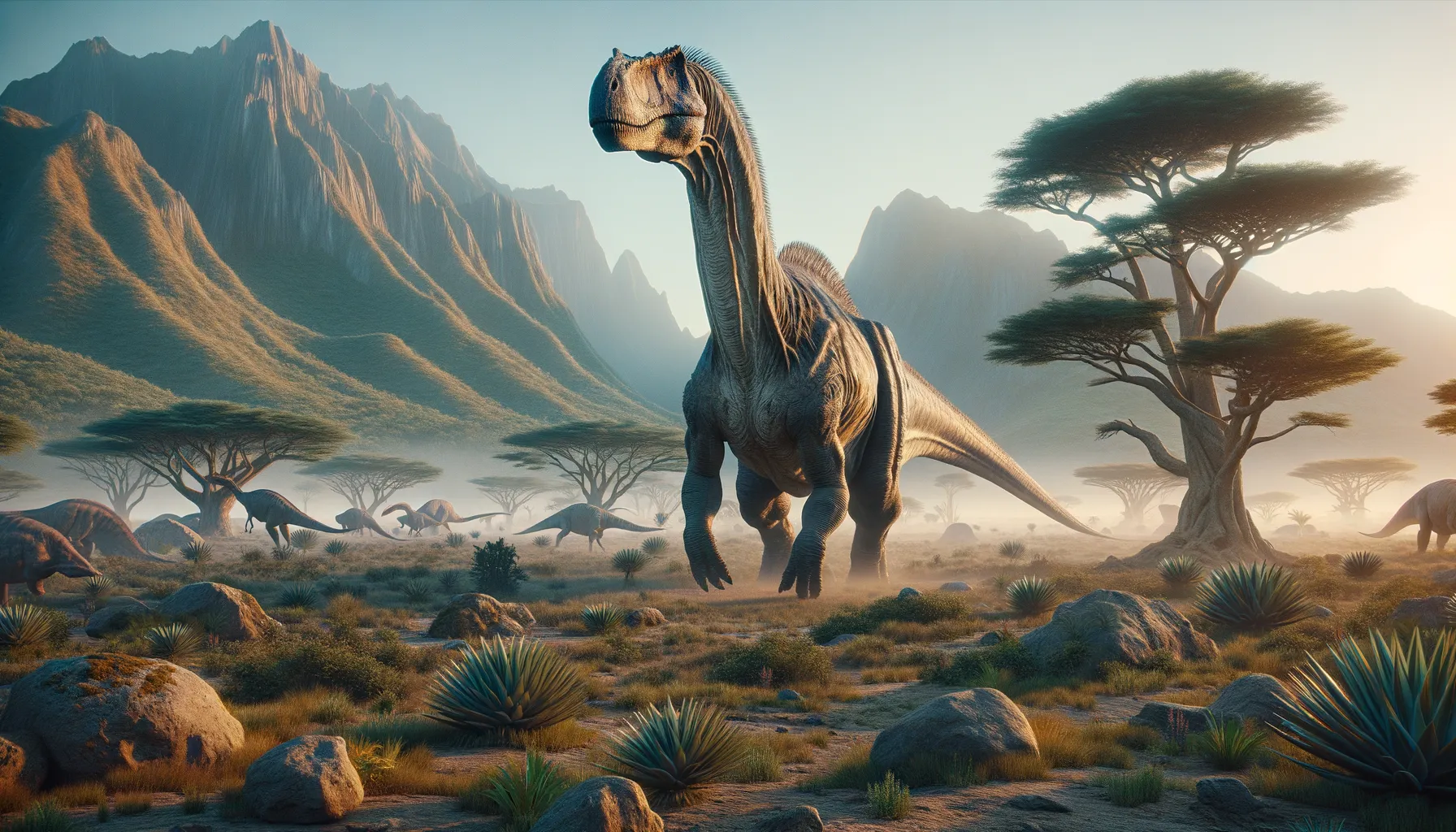
Itapeuasaurus
Giant of the Cretaceous greenery.
Period
triassic
Length
Around 10 to 15 meters in length.
Height
Estimated to be between 3 to 5 meters.
Weight
Likely several tons.
Itapeuasaurus was a large sauropod dinosaur known for its massive size and long neck. It roamed the Earth during the Cretaceous period, with fossil evidence found in South America. Its discovery has helped paleontologists understand the evolution and distribution of sauropods in this region. The species is characterized by certain unique features in its skeletal structure, adding important data to the evolutionary history of these giants.
Diet
As a herbivore, Itapeuasaurus likely fed on a variety of plants. Its long neck would have allowed it to reach high vegetation, as well as ground foliage.
Hunting
Being a plant-eater, Itapeuasaurus didn't hunt other animals. Instead, it foraged in areas rich with vegetation, using its large body to access resources.
Environmental challenges
Itapeuasaurus faced threats from climate changes that affected vegetation growth. Forest fires or droughts could have posed significant risks to its food supply. Predation by large carnivorous theropods might have been a concern, particularly for the younger or weaker individuals.
Speed
Probably moderate-paced due to its size.
Lifespan
Estimated to be several decades long.
First discovery
Unearthed in Brazil in 2014.
Fun Facts
- Itapeuasaurus is a type of sauropod dinosaur that roamed the Earth during the Cretaceous period.
- This dinosaur was discovered in Brazil, named after the Itapecuru River where its fossils were found.
- Itapeuasaurus belongs to a group called titanosaurs, known for their massive size and long necks.
- Despite its gigantic size, this dinosaur was a herbivore, munching on plants of the ancient forests.
- The discovery of Itapeuasaurus helps scientists understand more about the diversity of dinosaurs in South America.
- Titanosaurs like Itapeuasaurus had unique bones with air-filled chambers, making their skeletons surprisingly light.
- Itapeuasaurus got its name in 2021, highlighting how scientists are still finding new dinosaur species.
Growth and Development
Itapeuasaurus likely experienced rapid growth after hatching, similar to modern-day reptiles and birds. As it aged, growth rates might have slowed, allowing it to reach its massive size over several years. Its bones show patterns indicating distinct growth spurts during juvenile stages.
Habitat
Itapeuasaurus inhabited lush, forested environments in what is now Brazil. These habitats were rich in plant life, providing ample food. The region probably experienced seasonal changes which the dinosaur had to adapt to, impacting its foraging patterns.
Interaction with other species
Itapeuasaurus would have shared its habitat with other herbivorous and carnivorous dinosaurs. It might have formed herds for protection against predators. Interactions could have included both competition for resources and defensive behaviors when threatened by carnivores.
Natural lifespan
Its natural lifespan likely spanned several decades.
Reproduction
Itapeuasaurus, like other sauropods, is thought to have laid eggs. The size of its eggs would have been proportional to its body size. Parental care was likely minimal, with hatchlings being relatively independent early on.
Social behaviour
It may have lived in groups or herds, which provided safety in numbers. This social structure could have also helped in finding food and rearing young. Communication might have included vocalizations or display behaviors to maintain group cohesion.
Fossil locations
Fossils of Itapeuasaurus have been primarily found in Brazil, specifically within the Maranhão state. This region has been a rich source for discovering various Cretaceous period fossils, offering insight into the diversity of life during that era.
